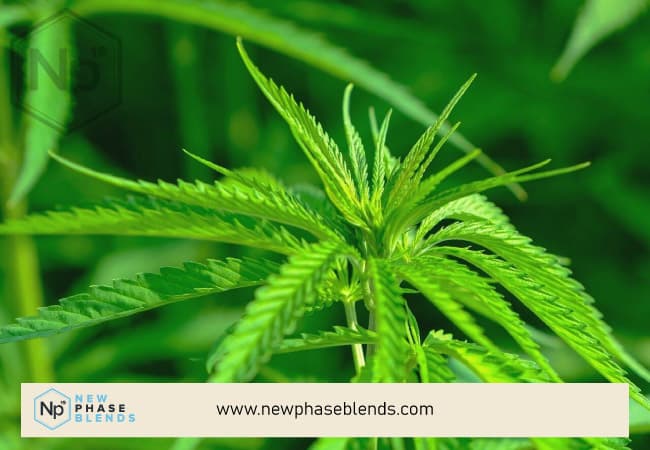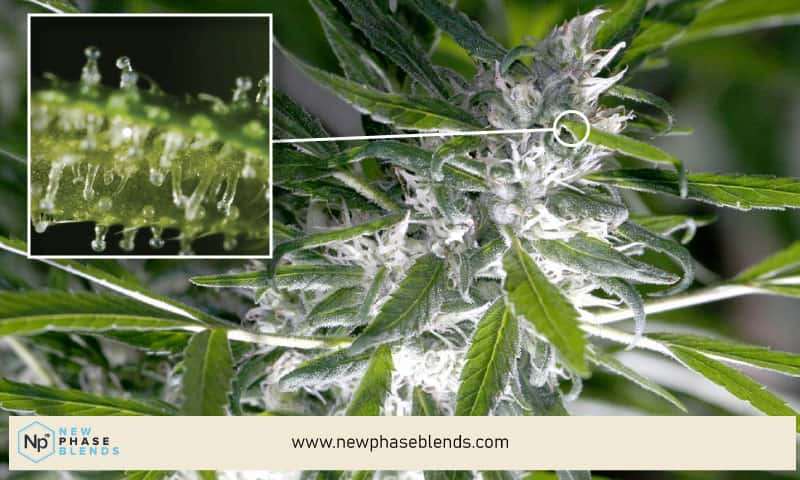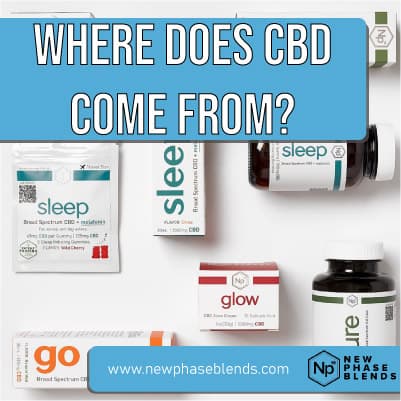Most people, by now, are familiar with cannabidiol, also known as CBD. While you’ve probably heard of it to, do you know where CBD comes from? Where does CBD come from? In today’s article on the origins of CBD, we’ll cover this, and more, when it comes to the natural plant chemical known as cannabidiol.
What is CBD?
Cannabidiol, or simply CBD, is one of the cannabinoids present in both hemp and marijuana plants. You might have heard of THC, too, right? Well, unlike THC, CBD is non-psychoactive and will not get you high. Hemp plants contain less than 0.3% THC, while marijuana plants have higher levels of THC. This is why people get high from using marijuana products, but do not get high from hemp products.
CBD products are legal if derived from hemp plants and contain less than 0.3% THC. Cannabidiol works by interacting with different cannabinoid receptors within the endocannabinoid system we all have. We’ll get more into this miraculous bodily system later on.
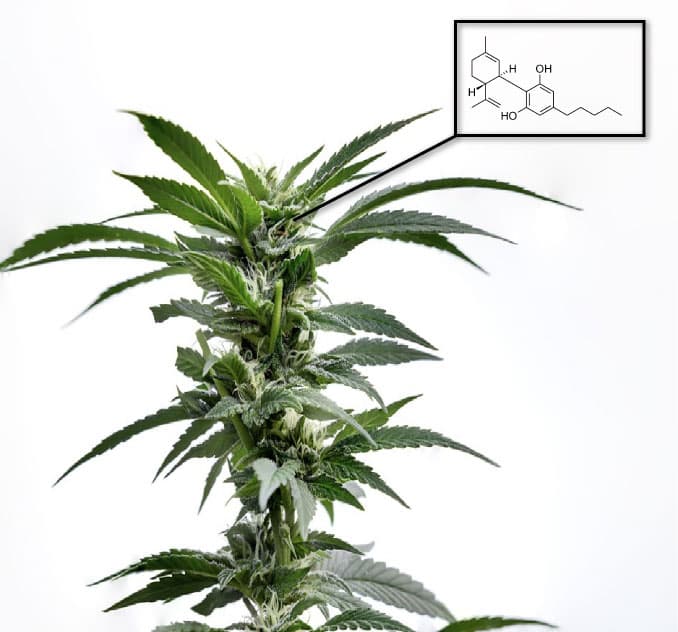
CBD products are consumed in a variety of forms, including oils. These products are made from an extract of the cannabis plant. The extract contains a concentrated amount of several different cannabinoids. CBD just happens to be found in larger quantities, when compared to other plant chemicals.
Where Does CBD Come From?
Cannabidiol is just one of many chemical compounds, or cannabinoids, found in cannabis plants. Cannabis is an annual, flowering plant that people have used for thousands of years. There are both male and female cannabis plants, but the flowers of the female plant contain the largest concentration of CBD. Male plants have comparatively smaller amounts of cannabinoids.
Industrial hemp is, largely, used to produce items like pure CBD oil. CBD can be extracted from marijuana, too, but it will also come with a high amount of THC – which makes it illegal in a majority of the United States.
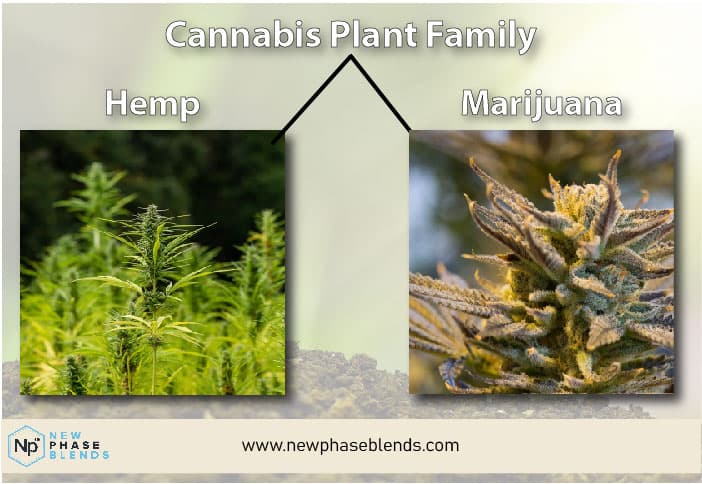
Most of the CBD in today’s products comes from industrial hemp, a type of cannabis plant with low levels of THC content. Before the 2018 Farm Bill, hemp was illegal to grow in the U.S. This new law changed things, making it legal to cultivate and commercialize hemp-derived products with CBD in them. As a result, the production of cannabidiol has skyrocketed. CBD is now being sold in drinks, baked goods, gummies, bath bombs, pet products, clothes…you name it! Americans can now enjoy all the benefits of cannabidiol without fear of breaking the law.
More On Cannabinoids
What is a cannabinoid? There are well over 100 different cannabinoids within cannabis. THC and CBD are only two examples, of many. You can view a list of cannabinoids at our plant chemical database, which is the best source of peer reviewed cannabinoid info on the internet.
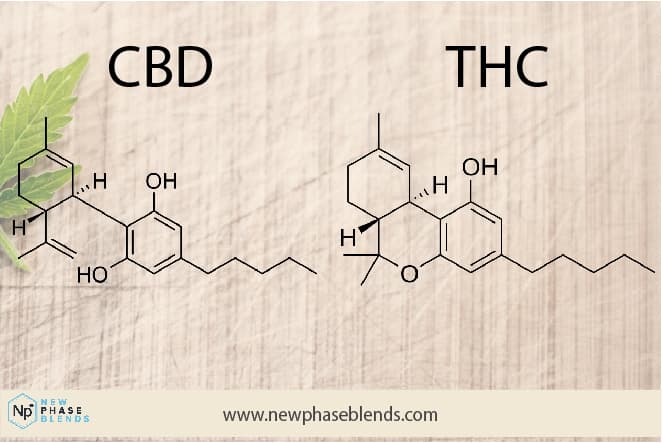
These cannabinoids are literally natural, plant chemicals that are found in cannabis. There are a ton of these cannabinoids, and the general thought is that they can offer slightly different benefits, depending on how they interact with receptors throughout our bodies.
CBD From Industrial Hemp
Hemp has been utilized for thousands of years and can be processed into various commercial and industrial products, including rope, textiles, apparel, shoes, food, paper, bioplastics, insulation, and biofuel.
Hemp plants are high in Cannabidiol (CBD). Marijuana, on the other hand, is noted for its relatively low cannabidiol content, and high THC content. CBD oil has been shown to help with conditions such as anxiety and pain. Hemp is a versatile and sustainable plant with various applications, from food and fibers to building materials. In addition, it is one of the most regenerative plants on the planet, meaning that it helps restore and improve soil health.
Unlike cotton, it requires little water or fertilizer to grow, and it is naturally resistant to pests, so it doesn’t need pesticides or insecticides.
Additionally, hemp helps capture carbon from the atmosphere and store it in the ground through its extensive root system. The hemp seeds are a complete protein source, providing all the essential amino acids your body needs. Keep in mind, though, hemp seeds have no cannabinoids in them. That means things like hemp seed oil will not offer the same benefits as CBD oil.
With so many benefits, it’s no wonder that it is becoming an increasingly popular crop.
Extracting CBD From Hemp
CBD is extracted from the cannabis plant by different means. This process results in a pure CBD oil that does not contain barely any THC, the main psychoactive compound found in cannabis.
The unprocessed cannabidiol oil must be removed from the raw plant material. There are several methods for extracting it. CO2 extraction is the best practical method for obtaining high-quality cannabidiol, and the extraction process involves applying high pressure to carbon dioxide while keeping the temperature low.
The gas is then passed through the raw material, extracting the CBD oil. This method effectively preserves the cannabinoids and terpenes that are also extracted from the plant.
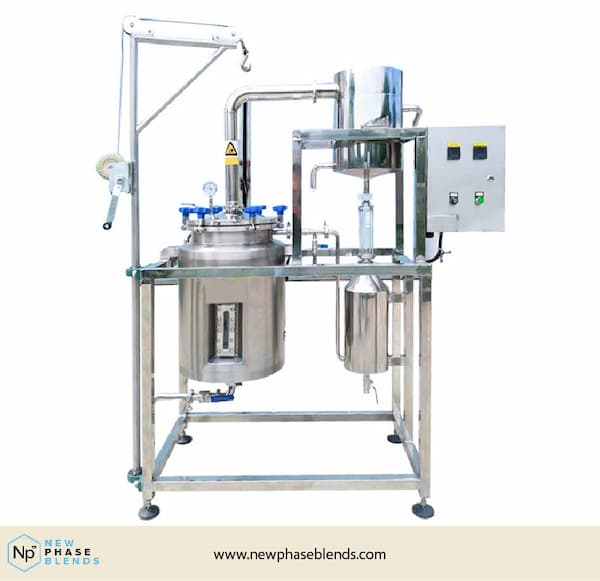
Once the cannabidiol oil is extracted, it is decarboxylated or heated to activate the compound. After that, it can be added to a carrier oil like coconut oil or hemp seed oil and consumed orally or applied topically to the skin.
All legal CBD products are produced by extracting CBD from the hemp plant, and then combining it with other oils or liquids. This process results in a more potent form of CBD that may contain traces of CBD and THC.
How Much CBD Can Hemp Produce?
This isn’t a straight forward answer. It depends on many, many different factors, including:
- climate
- growing medium
- strain grown
- growing techniques
If this topic interests you, check out our article on how much CBD one hemp plant can produce.
What Part of the Plant Does CBD Come From?
CBD is (largely) extracted from the hairs (trichomes) that grow on the plant.
A typical industrial hemp plant has tough rubbery stalks and grows taller than a marijuana plant. It has fewer flowering buds than marijuana plants, and the CBD content is most concentrated in the female flowers.
CBD is also found in smaller concentrations in the stems, leaves, and stalks of the plants.
The CBD extract from the hemp plants is made into a raw paste that can then be mixed with a carrier base such as hemp seeds or MCT from coconuts. This is then manufactured into products such as gummies, tinctures, edibles, gels, and lotions, all of which can be easily ingested or applied.
CBD From Marijuana
CBD can come from marijuana, too, but it will have high amounts of THC. CBD from marijuana is popular, too, it simply requires a medical license to use it in any state that has not legalized marijuana products. Remember the requirement that requires CBD products to contain less than 0.3% THC to remain legal? Well, CBD made from marijuana will have well over this amount, and these products will get you high.
How Does CBD Work in the Body?
Cannabidiol, or CBD, is a cannabinoid produced from the hemp plant’s flowers and trichomes. Cannabidiol (CBD) is present in the plant, alongside THC, CBG, and CBC.
While THC is the cannabinoid responsible for the psychoactive effects of marijuana, CBD does not produce any psychoactive effects. Cannabidiol has been found to counteract some of the harmful effects of THC.
Cannabidiol can be extracted from marijuana plants, but most cannabidiol products are made from hemp-derived CBD. Hemp plants contain shallow levels of THC, so hemp-derived CBD products will not produce any psychoactive effects.
However, when used as a carrier oil for CBD oil, Hemp seed oil is an excellent method to deliver cannabidiol to the body.
Different Spectrum Types of CBD Oil
When it comes to CBD oil, there are three main types: broad-spectrum, full-spectrum, and isolate. Broad-spectrum CBD oil contains all of the compounds found in the hemp plant, but with trace amounts of THC that near 0.0%.
Full-spectrum oil also contains all of the compounds found in the hemp plant, but with THC content near 0.3%.
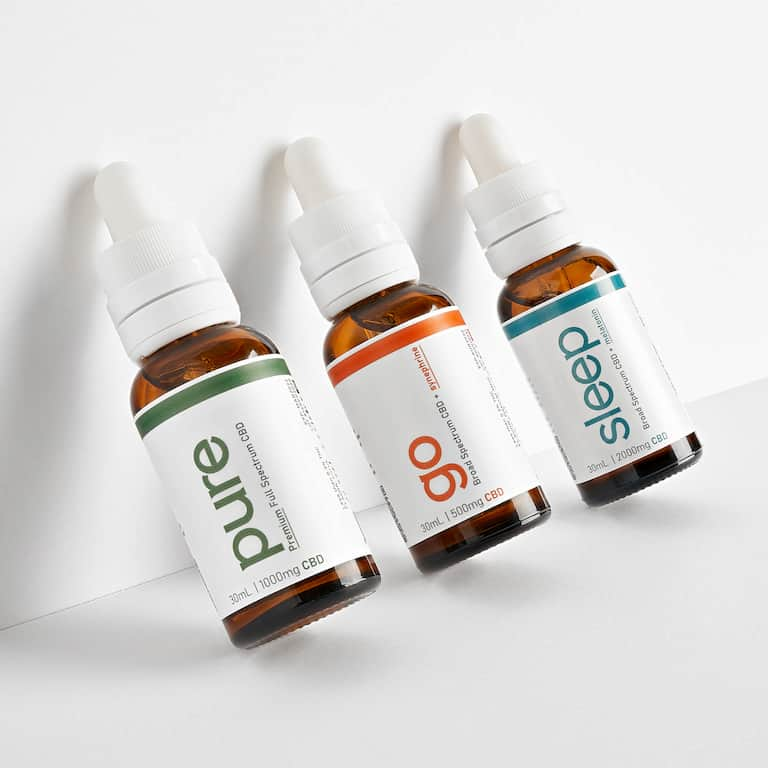
Isolate is just that – pure CBD that has been isolated from the other cannabinoids.
So, which one should you take? It depends on your needs and goals. If you’re looking for the entourage effect, where all cannabinoids work together to give you the maximum benefit, then broad-spectrum or full-spectrum CBD oil may be right for you.
However, isolate may be a better option if you’re concerned about drug testing or want to avoid the trace amounts of THC found in full-spectrum CBD oil.
Is CBD Legal?
Marijuana plants contain the compound CBD, also called Cannabidiol. Unlike THC, the other well-known cannabinoid, CBD does not have psychoactive effects. Therefore, it does not produce the “high” typically associated with marijuana use.
Cannabidiol has been shown to have various therapeutic benefits, including reducing anxiety and pain relief. As a result, many people are interested in using cannabidiol for a medical condition.
However, the legal status of CBD is complex and often depends on the individual state. In general, medical cannabis and medical marijuana are legal in some form in most states, but the specifics vary widely.
For example, some states only allow medical marijuana for certain conditions, while others have more broadly legal, medical cannabis laws. And while cannabidiol derived from marijuana plants is still federally illegal, CBD derived from hemp plants is now legal in all 50 states following the passage of the 2018 Bill.
This change in federal law makes hemp-derived CBD products more widely available, but it’s important to note that not all CBD products are created equal.
CBD and The Cannabis Industry
The CBD sector is still in its early stages, but it is expected to grow rapidly in the coming years. As more people seek out cannabidiol products, the industry is quickly expanding to meet the demand.
Cannabidiol oil products are already widely available, and more and more people are beginning to explore the therapeutic potential of this compound. With further research, CBD could become a mainstay of modern medicine.

As research continues to explore the potential health benefits of cannabidiol, the industry will likely continue to grow in popularity.
Summary – Origins of CBD
CBD oil or Cannabidiol is a natural product gaining popularity in recent years for its therapeutic properties. CBD oil can be derived from marijuana or hemp plants. Still, hemp-derived CBD is more widely available because it contains only trace amounts of THC, the psychoactive compound found in marijuana.
On the other hand, hemp seed oil is made from the the hemp seeds and does not contain any cannabidiol. However, both CBD oils offer a variety of health benefits, including reducing inflammation, relieving pain, and improving sleep. If you’re interested in trying cannabidiol oil for yourself, purchase it from a reputable source to ensure that you’re getting a quality product.




